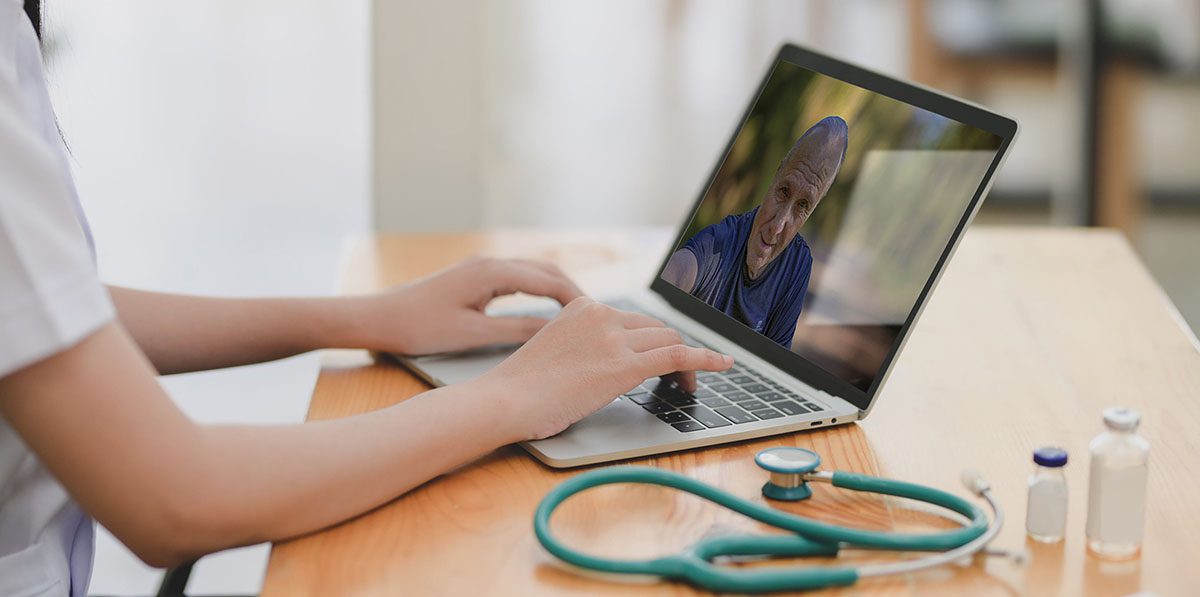As I shared in the first post in this series, telemedicine has been around for a while but is suddenly in the spotlight now. It is the perfect solution for situations where someone needs medical care but doesn’t require an in-person meeting—it gives doctors a risk-free way to
speak with their patients. Doctors, nurses, and other medical professionals are doing all they can to maintain social distancing. This has made telemedicine the obvious choice for routine check-ups or prescription refills.
Patients have also limited their visits to the doctor. Most people would happily skip spending time in a waiting room on a normal day, but it has become even easier to justify as we are all more aware of the risk of spending time close to other people.
Benefits for Doctors and Patients
The reduction in patient traffic to doctors’ offices has a surprising benefit for doctors. Because telemedicine visits are usually more efficient than in-person visits, doctors can save a significant amount of time.
The time saved by using telemedicine for routine items like checkups can be put towards working with patients who have immediate needs or new conditions. This lets doctors go deeper with those patients, ideally allowing for a better understanding of the illness, resulting in
an improved diagnosis.
Patients see multiple benefits from telemedicine. The most interesting upside is increased comfort: it’s relaxing sitting at your kitchen table or in an armchair while you speak with your doctor. Contrast that with waiting on an examination table in a gown and it’s no wonder that
telemedicine has become more popular.
There’s also an unexpected social benefit. Patients can connect on a more personal level with clinicians, showing them around their houses, introducing them to family members, and even letting them meet pets over video chat. Sharing the things you care about with someone who
helps to take care of you is a special experience. Instead of a transactional, businesslike relationship, something closer to a professional friendship is possible.
The fact that people can make strong connections with each other while using telemedicine is important; one of the fears that previously kept telemedicine from reaching its potential was that it would feel cold and impersonal. The mounting evidence of strong personal connections
makes it increasingly easier to argue that we should include telemedicine in everyday medical practice.
Leveraging Available Technology
Even with concerns about personal connection, telemedicine was making headway long before social distancing kept everyone inside. Facebook and other technology giants saw growth opportunities and started exploring things like virtual reality headsets in the hope that their
investments would lead to big breakthroughs in telemedicine.
The current situation seems to show they were over-thinking things: the technology we already have available offers everything we need. Some types of care, like physical exams, only work in person. For everything else, a high-definition video call usually does the trick. Because video
calling services are available across numerous platforms and devices, some of the best aspects of telemedicine are easily accessible for patients and doctors all over the US.
Telemedicine’s Popularity Here to Stay
We should expect to see people sticking with telemedicine long after the current health crisis is over. Broad accessibility allows easy adoption, making a complete return to old habits less likely. If you didn’t want to go sit in a waiting room during social distancing and found video
chatting with your doctor comparable to a visit in person, why change back after things normalize? If nothing else, telemedicine will be accepted as a viable option from now on.
There is also the business and regulatory side of things to take into consideration. Previous regulations prohibited telemedicine video calls via FaceTime, Zoom or Skype, in favor of platforms created specifically for medicine. The current health emergency prompted an adjustment to those policies, and penalties for using commonly available technology have been temporarily waived. That put telemedicine in everyone’s hands and gave people a sense for the convenience it offers.
What Happens Next?
There are two sets of decisions that will affect telemedicine in the next few years.
The first is whether regulators decide to maintain a flexible stance on consumer platforms like Skype and FaceTime. If the benefits of allowing widespread telemedicine are not enough to merit the use of non-medical technology, regulators could compromise. Reintroducing a portion of the existing rules, instead of going all the way back to pre-crisis levels of regulation, could allay security concerns without requiring expensive technology. Not everyone can afford proprietary video calling setups, but most people have a smartphone or a laptop. A return to old regulations could therefore exclude some people from telemedicine who had already used it during this period of social distancing. That’s undesirable and could be a very unpopular move.
Business is the second area that big decisions must be made. Companies who received lots of video traffic due to telemedicine will need to figure out if and how they can stay in the telemedicine game if regulations change. For example, Facebook won’t want to give up increased video chat traffic and could move quickly to make sure that their platform(s) become compliant with medical regulations. This could be framed as an upgrade to their existing service or a separate service altogether. Both would achieve the goal of staying ahead of regulatory changes.
Striking a Balance
Using telemedicine has clear benefits. Safer patient care, convenience, and increased efficiency make a strong argument for widespread adoption. Regulators, however, need to ensure that patient data is safe. Companies play a part too; any firm who offers a video streaming platform has recently found themselves in the medical technology business whether they planned on it or not. The goal for all involved needs to be providing patients with the best care possible. There are many factors to consider and it will take time for regulators, firms, doctors, and patients to find the right balance. In the meanwhile, telemedicine has proven that it can help us at a time when we need it most. The final post in this series will share how The Maplewood uses telemedicine to care for our residents.



